Topic
- Biotech-Kisan
- Medical and Rural Tourism
- Summer Solstice:
- REGEN-COV2
- Sickle Cell Disease | Unmukt Project
- Biotech-Kisan
#GS2 #Government policies #GS3 #Biotechnology
Context: The Ministry of Science and Technology has issued a Special Call for the North-East Region as a part of its Mission Programme “Biotech-Krishi Innovation Science Application Network (Biotech-KISAN)”.
Key Details:
- Biotech-KISAN is a Department of Biotechnology, Ministry of Science and Technology initiative that stimulates entrepreneurship and innovation in farmers and empowers women farmers.
- It aims to understand the problems of water, soil, seed and market faced by the farmers and provide simple solutions to them.
- It is a scientist-farmer partnership scheme launched in 2017.
- It is a pan-India program, following a hub-and-spoke model.
- The Biotech-KISAN hubs are expected to fulfil the technology required to generate agriculture and bio-resource related jobs and better livelihood ensuring biotechnological benefits to small and marginal farmers.
- Farmers are also exposed to best global farm management and practices.
Objectives and Scope of coverage:
- 146 Biotech-KISAN Hubs have been established covering all 15 agroclimatic zones and 110 Aspirational Districts in the country.
- Linking available science and technology to the farm by first understanding the problem of the local farmer and provide solutions to those problems.
- The working together, in close conjunction, of scientists and farmers is the only way to improve the working conditions of small and marginal farmers.
- This programme aims to work with small and marginal farmers especially the woman farmer for better agriculture productivity through scientific intervention and evolving best farming practices in the Indian context
- The scheme has benefitted over two lakhs farmers so far by increasing their agriculture output and income. Over 200 entrepreneurships have also been developed in rural areas.
About the Present Call:
- The present call specifically focuses on the North East Region (NER) as it is predominantly agrarian with 70% of its workforce engaged in agriculture and allied sector for livelihood.
- The region produces merely 1.5 % of the country’s food grain and continues to be a net importer of food grains even for its domestic consumption.
- The NER has untapped potential to enhance the income of the farming population by promotion of location specific crops, horticultural and plantation crops, fisheries and livestock production.
- The Biotech-KISAN Hubs in NER will collaborate with the top scientific institutions across the country as well as State Agricultural Universities (SAUs)/Krishi Vigyan Kendras (KVKs)/existing state agriculture extension services/system in the NER for demonstrations of technologies and training of farmers.
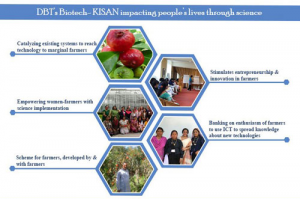
Biotechnology in Agriculture
Agricultural Biotechnology:
- Agricultural biotechnology is a range of tools, including traditional breeding techniques, that alter living organisms, or parts of organisms, to make or modify products; improve plants or animals; or develop microorganisms for specific agricultural uses.
- Modern biotechnology today includes the tools of genetic engineering.
Examples:
- Genetically Modified Organisms (GMO): These are plants, bacteria, fungi and animals whose genes have been altered by manipulation. GM plants (Bt Cotton) have been useful in many ways.
- Biopesticide: Bacillus thuringiensis is a naturally occurring soil bacterium that causes disease on insect pests. It is accepted in organic farming and is considered ideal for pest management due to its low cost, ease of application, high virulence and narrow host specificity.
- Medical and Rural Tourism
#GS2 #Government policies
Context: In order to boost the tourism sector in the aftermath of the coronavirus pandemic, the Ministry of Tourism recently released three draft strategies with roadmaps to promote India as a rural and medical tourism destination and to position it as a place for conferences, meetings and exhibitions.
Key details:
- The Draft National Strategy and Roadmap for Development of Rural Tourism in India seeks to develop and promote local products through tourism to generate income and jobs in rural areas and empower local communities.
- This will help in reducing the migration from rural areas, poverty alleviation and sustainable development.
- The government of India recognises medical value travel and wellness tourism as one of the important sectors having the potential of accelerating the country’s development and attaining the objective of Aatmanirbhar Bharat.
- Draft National Strategy and Roadmap for Medical and Wellness Tourism – seeks to promote India as an accessible and affordable destination for medical treatments and wellness courses.
- The key drivers for growth of medical tourism and wellness tourism are mainly affordability and accessibility of good healthcare services, facilitation around hospitality services, minimal waiting time, availability of latest medical technologies and accreditations.
- The national strategy aims at providing an institutional framework strengthening the ecosystem for medical and wellness tourism, developing a brand and ensuring quality assurance
Medical and Wellness Tourism (MWT):
- Describes the rapidly growing practice of travelling across international borders to obtain healthcare services.
- It may be broadly classified into three categories – Medical Treatment, Wellness & Rejuvenation and Alternative Cures. Now it is often referred to as Medical Value Travel (MVT).
Scope in India:
- State of the Art Medical Facilities: Top of the line medical and diagnostic equipment from global international conglomerates are available.
- Reputed Healthcare Professionals: Reputation for high-quality medical training and also fluent in English to converse with foreigners.
- Financial Savings: The cost of quality of medical procedures and services are low in India.
- Alternative Cures: India has a unique advantage of offering Yoga, Ayurveda & Naturopathy for treatment.
Major Strategy:
- “Heal in India” Brand for promoting India as a MVT destination.
- Capacity building of MVT facilitator, enterprises and staff.
- Convergence of Wellness, Hospitality and Travel businesses.
- The process to issue medical visas has been made much more efficient, thus reducing the time taken in visa procurement.
- The scope of e-tourist visa has been expanded to include short- term medical treatment.
- Separate immigration counters and facilitation desks have also been set up at major Indian airports to boost the medical travel industry.
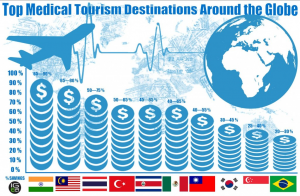
Rural Tourism:
- Any form of tourism that showcases the rural life, art, culture, and heritage at rural locations, thereby benefiting the local community economically and socially.
- It offers an opportunity to promote sustainable and responsible tourism and fulfill the vision of Atmanirbhar Bharat.
Scope in India:
- Indian villages have unparalleled culture, craft, music, dance and heritage to offer to the visitors.
- Well-developed agriculture and farms to provide stay facilities and experiences.
- Beautiful climate conditions and Biodiversity.
- India has coastal, Himalayan, desert, forest and tribal areas amongst others for tourists.
Major Strategy:
- State Assessment and Ranking as a tool for Capacity Building (including that of Panchayati Raj Institutions).
- Enabling Digital Technologies for Rural Tourism like enabling broadband internet infrastructure to rural areas having tourism potential.
- Developing clusters for rural tourism.
MICE (Meetings, Incentives, Conferences and Exhibitions)
- The main purpose is to create a networking platform for business, industry, government and Academic Community and engage in meaningful conversations.
- MICE is also known as ‘Meetings industry’ or ‘Events industry’.
Scope in India:
- Core MICE infrastructure amenities are at par with most developed countries.
- India has consistently improved its rank in World Bank Ease of Doing Business and WEF Travel and Tourism Competitiveness Rank.
- Growing Economic Strength of India.
- India has progressed rapidly in the areas like Information Technology, and Scientific Research.
- Summer Solstice:
#GS1 #Important Geophysical Phenomena
Context: June 21- this day is referred to as the summer solstice, the longest day of the summer season. It occurs when the sun is directly over the Tropic of Cancer.
Meaning of the Word ‘Solstice’:
- It is a Latin word that means ‘stalled sun’. It is a natural phenomenon that occurs twice every year, once in the summer and again during winter, in each hemisphere of the earth – Summer and Winter Solstice.
About Summer Solstice:
- It is the longest day and shortest night of the year in the Northern Hemisphere.
- During this, countries in the Northern Hemisphere are nearest to the Sun and the Sun shines overhead on the Tropic of Cancer (23.5° North).
- During the solstice, the Earth’s axis — around which the planet spins, completing one turn each day — is tilted in a way that the North Pole is tipped towards the sun and the South Pole is away from it.
- Typically, this imaginary axis passes right through the middle of the Earth from top to bottom and is always tilted at 23.5 degrees with respect to the sun.
- At the Arctic Circle, the sun never sets during the solstice.
- This day is characterised by a greater amount of energy received from the sun. According to NASA (National Aeronautics and Space Administration), the amount of incoming energy the Earth received from the sun on this day is 30% higher at the North Pole than at the Equator.
- The maximum amount of sunlight received by the Northern Hemisphere during this time is usually on June 20, 21 or 22.
- The reason behind the changing lengths of the days is the Earth’s tilt.
- The Earth’s axis of rotation is tilted at an angle of 23.5° to its orbital plane. This tilt, combined with factors such as Earth’s spin and orbit, leads to variations in the duration of sunlight, due to which any location on the planet receives different lengths of days.
- The Northern Hemisphere spends half the year tilted in the direction of the Sun, getting direct sunlight during long summer days. During the other half of the year, it tilts away from the Sun, and the days are shorter.
- The tilt is also responsible for the different seasons on Earth. This phenomenon causes the movement of the Sun from the northern to the southern hemisphere and vice versa bringing in seasonal changes in the year.
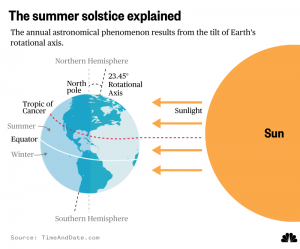
The Equinox:
- Twice each year, during the equinoxes (“equal nights”), Earth’s axis is not pointed toward our Sun, but is perpendicular to the incoming rays.
- It results in a “nearly” equal amount of daylight and darkness at all latitudes.
- The vernal or spring equinox occurs in the northern hemisphere on March 20 or 21. September 22 or 23 marks the northern hemisphere autumnal or fall equinox.
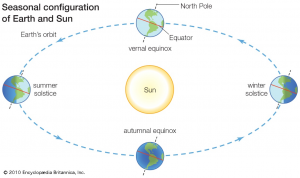
What is the winter solstice?
- 21st December or the Winter Solstice marks the shortest day of the year in the Northern Hemisphere.
- It is the shortest day and longest night of the year in the Northern Hemisphere and is also known as the ‘first day of winter’ in the Northern Hemisphere as well as ‘Hiemal solstice or Hibernal solstice’.
- During this, countries in the Northern Hemisphere are farthest from the Sun and the Sun shines overhead on the Tropic of Capricorn (23.5° south).
4.REGEN-COV2
#GS3 #Science and technology
Context: An experimental monoclonal antibody cocktail, REGEN-COV2, has been found to be a life-saving treatment for some of the most severely affected Covid-19 patients, results of a clinical trial in the UK have shown.
What are Monoclonal antibodies?
- Monoclonal antibodies are artificial antibodies that perform the activity of our immune systems.
- They are produced by extracting specific antibodies from human blood and then cloning them.
- They are designed to target a virus or specific part of one the virus.
- Monoclonal antibodies bind to specific parts of spike protein and block its ability to infect healthy cells.
How are they created?
- Monoclonal antibodies can be created in the lab by exposing white blood cells to a particular antigen.
- To increase the quantity of antibodies produced, a single white blood cell is cloned, which in turn is used to create identical copies of the antibodies.
- In the case of Covid-19, scientists usually work with the spike protein of the SARS-CoV-2 virus, which facilitates the entry of the virus into the host cell.
Need for monoclonal antibodies:
- In a healthy body, the immune system is able to create antibodies — tiny Y-shaped proteins in our blood that recognise microbial enemies and bind to them, signalling the immune system to then launch an attack on the pathogen.
- However, for people whose immune systems are unable to make sufficient amounts of these antibodies, scientists provide a helping hand- using monoclonal antibodies.
Limitation of Monoclonal Antibodies:
- Monoclonal therapies have shown results in high-risk groups with mild to moderate Covid-19 infections. However, they are not approved for use in severe Covid-19 cases that require oxygen. Further, emerging variants like Delta Plus have also displayed ability to nullify the use of monoclonal antibodies.
History:
- The idea of delivering antibodies to treat a disease dates as far back as the 1900s, when Nobel-prize winning German immunologist Paul Ehrlich proposed the idea of a ‘Zauberkugel‘ (magic bullet), a compound which selectively targets a pathogen.
- From then, it took eight decades of research to finally arrive at Muromonab-CD3, the world’s first monoclonal antibody to be approved for clinical use in humans.
- Muromonab-CD3 is an immunosuppressant drug given to reduce acute rejection in patients with organ transplants.
Applications:
- Monoclonal antibodies are used to treat cancers, Ebola and HIV, besides covid-19.
- Research, amid the covid-19 pandemic, are optimistic about abilities of monoclonal antibodies in reducing the risk of hospitalisation.
- Monoclonal antibodies have also shown ability to retain activity against multiple variants of covid-19 virus.
Antibody:
- Antibody, also called immunoglobulin is a protective protein produced by the immune system in response to the presence of a foreign substance, called an antigen.
- A wide range of substances are regarded by the body as antigens, including disease-causing organisms and toxic materials.
- Antibodies recognize and attack onto antigens in order to remove them from the body.
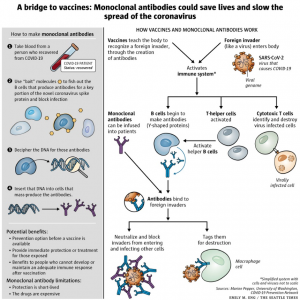
- Sickle Cell Disease | Unmukt Project
#GS1 #Health and related issues #issues related to SC and ST
Context: To commemorate the World Sickle Cell Disease (SCD) Day on 19th June, the Ministry of Tribal Affairs (MOTA) flagged off mobile vans under the Unmukt project for strengthening screening and timely management of SCD in tribal districts of Jharkhand and Chhattisgarh.
About:
- World Sickle Cell Awareness Day is observed every year on June 19 to increase awareness and understanding of the disease and the challenges faced by its patients and their families.
- The United Nations General Assembly (UNGA) adopted a resolution recognising SCD as a public health problem on 22th December, 2008.
- The UNGA also recognised SCD as one of the first genetic diseases.
- As per Tribal Ministry, SCD is affecting more women and children.
- Nearly 20 per cent of tribal children with SCD die before reaching the age of two, and 30% children die before reaching adulthood.
- Ministry stressed on the need for reinforcing awareness and prevention following simple yet innovative measures to tackle SCD and highlighted an urgent need for multi-stakeholder engagement as well as meaningful partnerships with like-minded organizations, pharmaceutical industries, private organizations, not-for-profit organizations for working jointly to reduce morbidity and mortality from SCDs and increasing the access to care for SCD in tribal regions of India.
Sickle Cell Disease:
- It is an inherited blood disease which is most common among people of African, Arabian and Indian origin.
- It is a group of disorders that affects hemoglobin, the molecule in red blood cells that delivers oxygen to cells throughout the body.
- People with this disease have atypical hemoglobin molecules called hemoglobin S, which can distort red blood cells into a sickle, or crescent shape.
- This blocks blood flow and oxygen from reaching all parts of the body.
- It can cause severe pain, referred to as sickle cell crises.
- Common symptoms of sickle cell disease: Anaemia, Episodes of pain, Swelling of hands and feet, Frequent infections, Delayed growth or puberty, Vision problems.
- Over time, people with sickle cell disorders can experience damage to organs including the liver, kidney, lungs, heart and spleen. Death can also result from complications of the disorder.
- Medication, blood transfusions and rarely a bone-marrow transplant.
- India alone is home to about 1,50,000 patients with SCD and about 88% of Sickle Cell Anaemia (SCA) cases in Asia.
- The disease in India occurs predominantly in eastern Gujarat, Maharashtra, Madhya Pradesh, Chhattisgarh, western Odisha and in pockets of the Nilgiris Hills in north Tamil Nadu and Kerala.
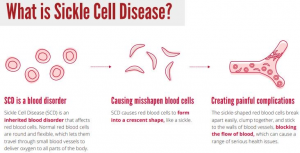
Initiatives by India:
- SCD Support Corner, a portal to collect real time data and provide relevant information related to Sickle Cell.
- It will help in making a Central Repository of data.
- An ‘Action Research’ project under which Yoga dependent lifestyle is promoted to reduce the complications in the patient suffering from this disease.
- Certain states, such as Chhattisgarh and Gujarat, have expanded their screening programmes from hospital to school-based screenings.
- Extrapolating such screening efforts and implementation strategies to other states will help map the prevalence of the disease.
- The Ministry of Social Justice and empowerment has increased the validity of disability certificates for SCD patients from 1 year to 3 year.
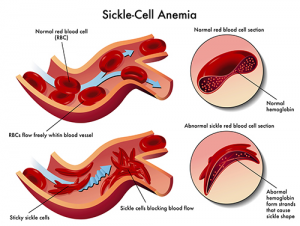
Courses we offer
UPSC Civil Services Coaching ( We are the best top rated IAS Academy in Vijayawada and Andhra Pradesh by Times of India Excellence award)
Degree with IAS (BA and BSc plus UPSC Coaching)
Inter with IAS (Sarat Chandra Junior College provides intermediate plus UPSC Coaching with HEC, MEC, CEC along with CLAT, IIT HSEE, IPMAT)
